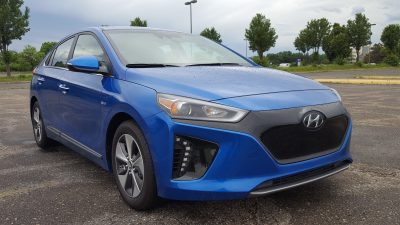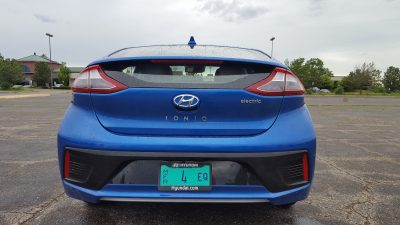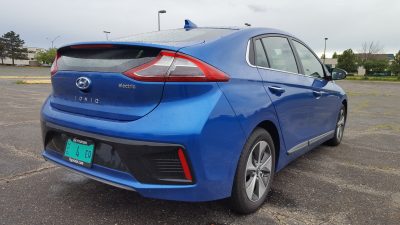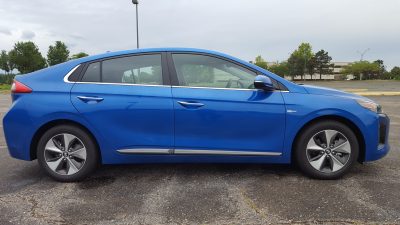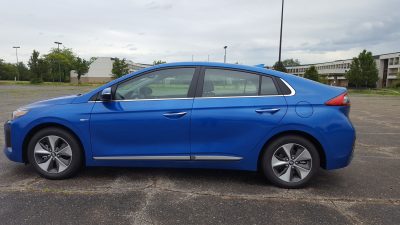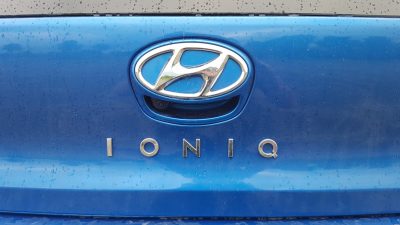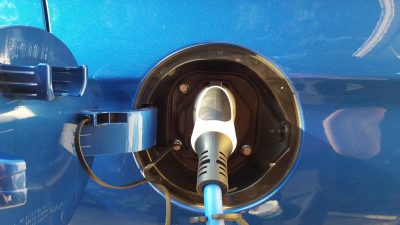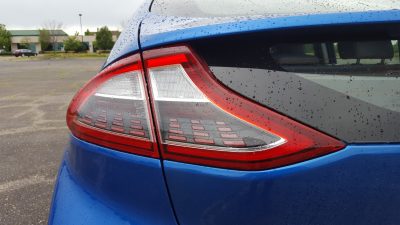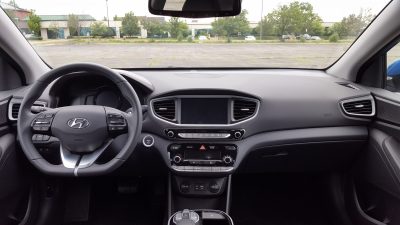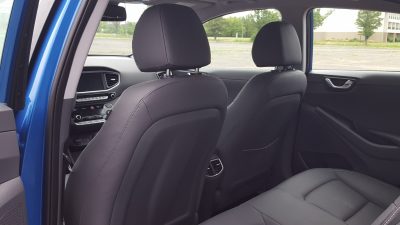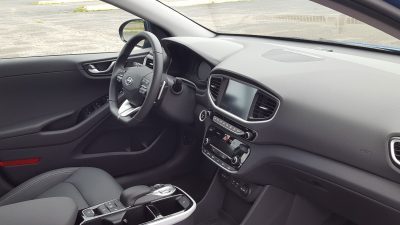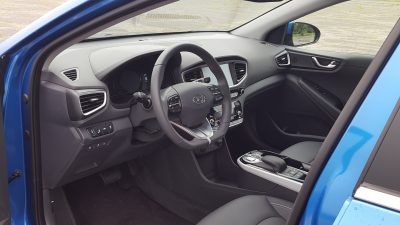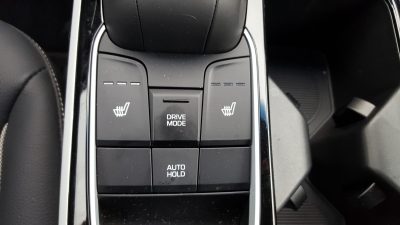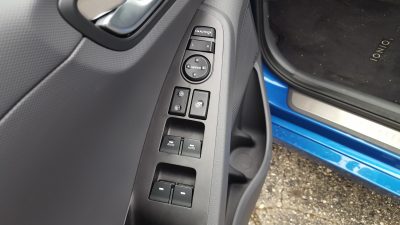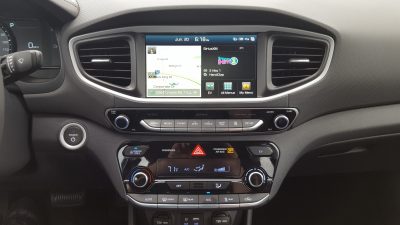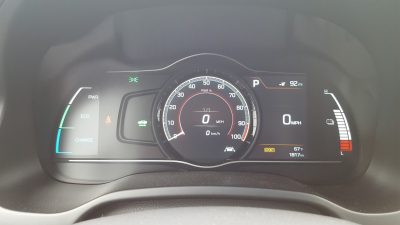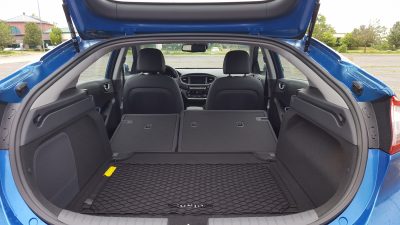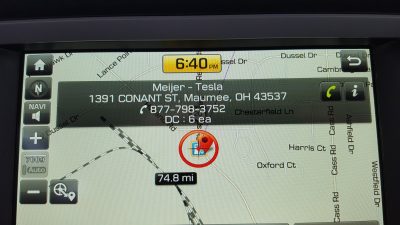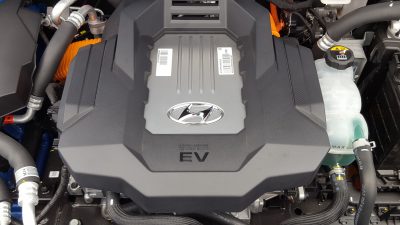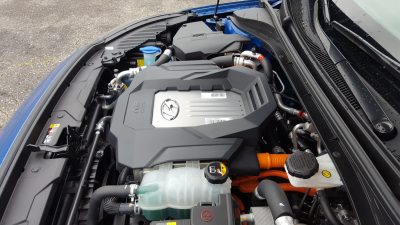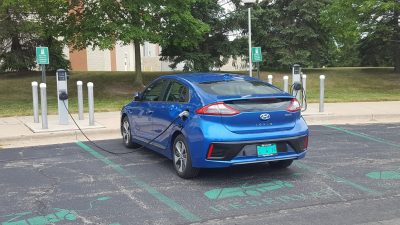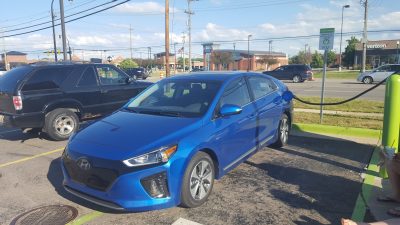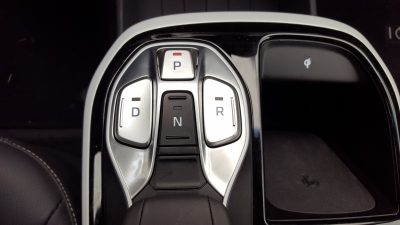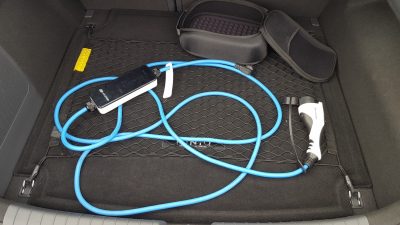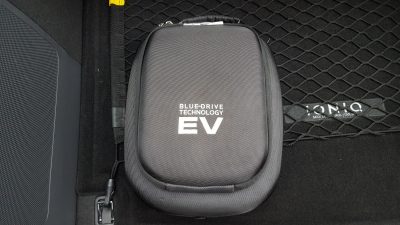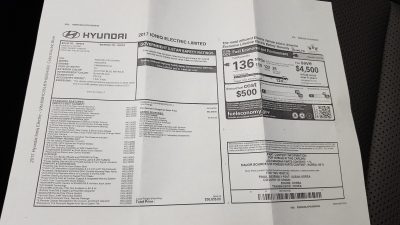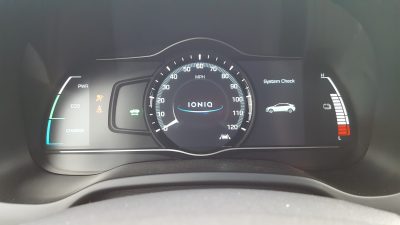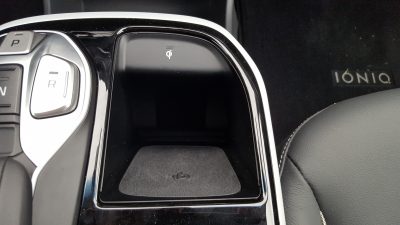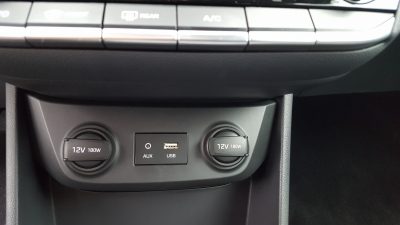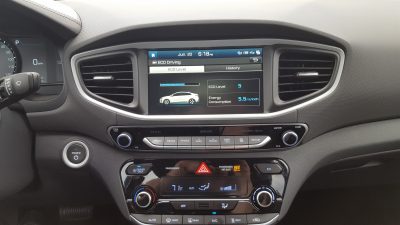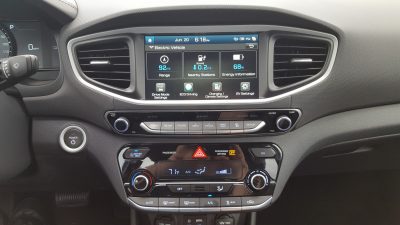Once considered rolling science experiments 15 to 20 years ago, electric vehicles are seeing a resurgence in both relevance and importance to a new generation of car buyers.
When I was growing up in Metro Detroit, it was in a GM household, and the infamous EV-1 was the symbol of GM’s brief but compelling trip into the world of mass market vehicle electrification. Tremendous progress has been made since then (case in point the Chevrolet Bolt), and electric vehicles are slowly making the transition from curiosity, to mass market reality.
But does this mean that electric vehicles are at long last a viable alternative to traditional gasoline powered automobiles? Or is there still work that needs to be done? To find out, we slipped behind the wheel of the 2017 Hyundai Ioniq Electric, and were determined to answer this compelling question.
The exterior styling of our Electric Blue tester does not stray too far from the standard Ioniq, which in turn was designed to blend into traffic versus being a flashy billboard for its clean driving virtues. The Ioniq is designed to be a fast hatchback, with inspiration evenly split between the second generation Toyota Prius and the first generation Chevrolet Volt.
The end result is a conservative suit of clothes that still features enough creases and lines to maximize its aerodynamic footprint.
Despite its best efforts to blend in however, our tester still managed to standout and draw stares out on Michigan roads (thanks in part to its rarity here in the mitten state,) as well as its distinctive styling differences. These include the blocked off front grille, LED DRL’s at each end of the front bumper, as well as an EV exclusive design for the tail lights.
While the Chevrolet Bolt maybe the center of attention at the moment, we suspect that the Ioniq will ultimately be the one that ages better in terms of aesthetics, thanks to its conservative suit of clothes as well as its Prius like shape.
This conservative theme also carries over to the cabin which eschews electronic gimmickry and futuristic design in lieu of a straightforward layout that balances function and design. This is blended with some of the unconventional yet environmentally friendly measures that Hyundai engineers undertook when they constructed the cabin.
This includes plastics that were designed with a mixture of volcanic stone and powdered wood, as well as soybean oils for some of its painted areas. As a bonus, many of the soft touch plastic elements contain sugarcane which is the same plant that also gives select variants of soda their sweetness.
With all of this eco-friendly focus, it is refreshing to see that Hyundai designers still managed to squeeze in helpful pinches of fun into the design. This includes the flat bottomed steering wheel, as well as the strategically placed splashes of metallic trim. Many controls are easy to use and alot of the functions are controlled by familiar touch controls.
The Ioniq also offered good amounts of leg and headroom, but like the Elantra, the seat bottoms are short, and they also deliver sub-par thigh support.
The Ioniq also comes with standard Apple CarPlay and Android Auto capability which makes integrating electronics a breeze, a big plus for tech savvy millennials.
In fact we only managed to find two gripes during our time with the Ioniq with overall rear visibility being cleaved by the integrated rear spoiler, as well as the excessively loud chimes emitted by the blind spot monitoring system. The latter item forced us to formally turn it off during freeway driving, before a later trip to the owners manual revealed how to turn down the volume.
But the real question here is how the Ioniq Electric performs? And on that front our tester did an admirable job handling the daily commute. Power comes from a 118 horsepower permanent magnet AC electric motor that is also good for 215 lb-ft of torque. This commendable level of torque is most noticeable in Sport mode, where it helped the Ioniq Electric deliver strong acceleration, as well as an 8.0 second sprint to 60 mph.
Handling is also lively, though the modest grip limits for the green focused Michelin Energy Saver all-season tires keep it from having go kart like reflexes. Plugging in the Ioniq was a breeze, and our tester featured Hyundai’s In-Cable Control Box (ICCB) which allows the car to fully charge in four and a half hours. The cable between the box and the car is a commendable length, and was able to reach the wall mounted socket in our garage with some help from creative parking on the driveway.
A key obstacle for current electric vehicles is their ability to go long distances in interstate commuting. We wanted to see how the Ioniq Electric would fare in this arena, so we enlisted its services on a trip to Toledo Ohio to visit my girlfriends relatives.
The trip itself spanned just over 100 miles (due to the closure of southbound I-75,) and while our tester had impressive levels of comfort and poise on the freeway, its meager 124 mile driving range did force us to have charging stations mapped out in advance to help it make the trek. This included a brief hunt for charging stations in Ohio before finding one at the University of Toledo Medical Center.
The Ioniq Electric’s infotainment system has a function that supposedly helps drivers find nearby charging stations, but we discovered that among the list of available options were several Tesla sourced Supercharger stations. Hopefully Hyundai engineers will clear out these stations in future updates, given that Tesla is an indirect rival in this segment.
Thankfully, the feature redeemed itself later in the day when it helped us locate a fast charging station in Woodhaven, MI near a Dunkin Donuts. Overall, this trek revealed that while the Ioniq Electric (and others like it) have made great advances in operating range, the infrastructure supporting these vehicles still has a long way to go before it reaches a level that can truly sustain long distance EV commuting.
Pricing for the Ioniq Electric starts at $29,500 for the base model with Limited grade models like our tester boasting a base price of $32,500. Our tester featured the $3,500 Ultimate Package that bundled features such as LED illumination, Lane Departure Warning, HID headlights, as well as wireless charging for mobile devices. This package along with the $835 handling charge pushed the final price to $36,835 before various government credits are factored into the equation.
However, a key caveat for the Ioniq Electric is that it is currently available only in California with Hyundai claiming that nationwide availability will happen in the near future. For now, this makes the Electric model a rare sight outside of California, with our tester being even rarer in Michigan then some exotic supercars.
Buyers in other parts of the U.S. looking to add an Ioniq to their garage, only get to spec the standard hybrid model which has a base price of $22,200, with SEL and Limited models staying just below $30,000 with their respective base pricing.
This pricing ladder allows the Hybrid to compete with the Toyota Prius as well as the outgoing Ford C-Max hybrid, with the upcoming plug-in electric version aiming squarely at the Chevrolet Volt. Meanwhile, Electric models like our tester face off mainly against the Nissan Leaf (due for a redesign in 2018,) and the Chevrolet Bolt which outclasses the Ioniq in range with its 238 mile figure. Another potential contender is the Tesla Model 3 sedan though its pricing is higher than the Ioniq’s.
While the infrastructure needed for mainstream electric vehicle operations may still be rough around the edges, the 2017 Hyundai Ioniq Electric is a finely honed example of how far electric vehicle technology has come. We look forward to seeing what the Electric Ioniq can bring to customers once it is unleashed in all 50 states.

Carl Malek has been an automotive journalist for over 10 years. First starting out as a freelance photographer before making the transition to writing during college, his work has appeared on numerous automotive forums as well as websites such as Autoshopper.com.
Carl is also a big fan of British vehicles with the bulk of his devotion going to the Morgan Motor Company as well as offerings from Lotus, MG, and Caterham. When he is not writing about automobiles, Carl enjoys spending time with his family and friends in the Metro Detroit area, as well as spending time with his adorable pets.


